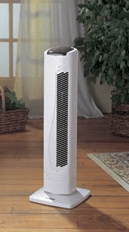 Name of product: Travel’N Baby Mini Hair Dryers
Name of product: Travel’N Baby Mini Hair Dryers
Units: About 18,000
Importer: Detour Corp., doing business as Version-X, of Studio City, Calif.
Distributor: Metropolis Beauty Inc., of Los Angeles, Calif.
Hazard: These electric hair dryers are not equipped with an immersion protection plug to prevent electrocution if the hair dryer falls into water. Electric shock protection devices are required by industry standards for all electric hand-held hair dryers. If the hair dryer falls into water during use and is not equipped with this safety device, it can pose a shock and/or an electrocution hazard to consumers.
Incidents/Injuries: None reported.
Description: The recalled hair dryers are made of plastic and are red, blue or green. The hair dryer’s handle folds up. The words “Travel’N Baby” are printed on one side of the hair dryer.
Sold by: Independent beauty supply stores and beauty salons nationwide and online at www.metropolisbeauty.com from January 2004 through January 2005 for about $20.
Manufactured in: China
Remedy: Consumers should stop using these hair dryers immediately and contact Version-X at (800) 871-6824 between 9 a.m. and 5 p.m. PT Monday through Friday or visit the recall Web site at www.metropolisbeauty.com for a replacement hair dryer equipped with an immersion protection plug.
 Name of product: Holmes® Oscillating Tower Fans
Name of product: Holmes® Oscillating Tower Fans According to the kitchen technology and appliances director of the Good Housekeeping Research Institute Karen Franke:
According to the kitchen technology and appliances director of the Good Housekeeping Research Institute Karen Franke: “We don’t recommend that people do it,” she told
“We don’t recommend that people do it,” she told  Microwave ovens are famous for cooking or heating the food but the appliance that cooks food by means of high-frequency electromagnetic radiation can also help in keeping bacteria away from taking over kitchen, a team of environmental engineers from the
Microwave ovens are famous for cooking or heating the food but the appliance that cooks food by means of high-frequency electromagnetic radiation can also help in keeping bacteria away from taking over kitchen, a team of environmental engineers from the